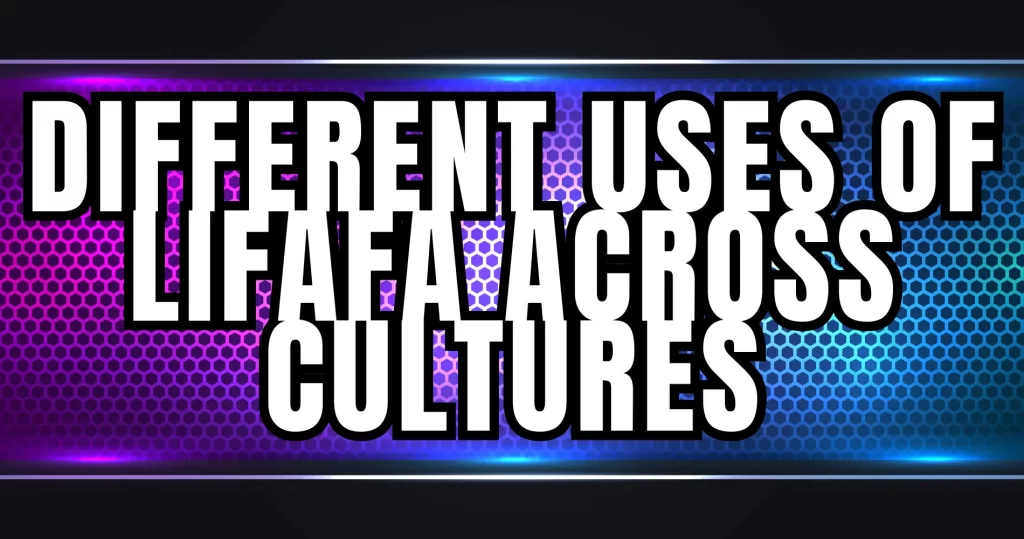The term “lifafa” may seem simple, yet it carries a wealth of meaning, history, and cultural significance. In many cultures, it refers to an envelope or covering often used to give gifts, letters, or money on special occasions. Beyond its literal purpose, it has symbolized generosity, respect, and celebration for centuries. The beauty of it lies in its versatility, making it relevant even in today’s modern context. This article will explore the origins of lifafa, its uses, and the ways in which it has evolved over time.
In countries like India, Pakistan, and other South Asian nations, giving it during weddings, festivals, and religious events is a time-honored tradition. Sites like Vclub even incorporate one into modern gaming and entertainment platforms, where it represents a form of virtual gifting.
A Brief History of Lifafa
The practice of using lifafa has deep historical roots. Some records indicate that similar customs existed in ancient civilizations, where people would wrap messages or gifts in protective layers to convey respect. In South Asia, lifafa became popularized as a cultural practice where money or gifts were given in an envelope, especially on auspicious occasions. This tradition not only ensured the privacy of the giver’s offering but also added a layer of anticipation and formality to the gesture.
In recent decades, the concept of lifafa has been adapted in numerous ways, from digital gift-giving to customizable envelopes for personal celebrations. As a result, it has continued to evolve, holding a unique place in both traditional and modern practices.

Different Uses of Lifafa Across Cultures
The lifafa has taken on various roles across cultures and occasions, each highlighting its unique significance. Here are a few common ways it is used:
- Wedding Gifts: In South Asian weddings, it’s customary to present the bride and groom with a lifafa filled with money. This gesture is both practical and symbolic, representing good wishes and financial support for the couple’s new life together.
- Festivals and Celebrations: During religious festivals like Diwali or Eid, it is often filled with cash or small tokens and presented to loved ones. This practice symbolizes abundance, love, and blessings.
- Condolences: In some cultures, people offer it containing money as a token of sympathy during times of mourning, helping the grieving family cover expenses.
- Digital Lifafa: With the advent of online transactions and digital gift-giving, lifafa has entered the digital realm. Many platforms now offer virtual envelopes, allowing people to send monetary gifts electronically.
How to Create the Perfect Lifafa for Any Occasion
If you’re interested in creating a lifafa that stands out, there are several ways to personalize it for any occasion. Here are a few ideas:
- Choose the Right Design: Opt for designs that match the event’s theme. Traditional lifafas often feature intricate patterns, while modern designs can be minimalist and sleek.
- Add a Personal Touch: Including a short handwritten message or a small decorative item inside it can make the gift more meaningful.
- Consider the Material: It come in various materials, from simple paper to luxurious fabric or leather. Choose a material that complements the occasion and enhances the presentation.
- Opt for Reusable Ones: Many people are now creating reusable ones made from eco-friendly materials like cloth or wood. These not only look beautiful but also promote sustainability.
- Include a Small Surprise: Add a small trinket or charm inside it, especially if it’s for a close friend or family member. This thoughtful gesture can make the gift feel even more special.
The Lifafa in Modern Context: Digital Gifting and E-wallets
As the world embraces digital transactions, the traditional lifafa has also adapted to modern times. Virtual options have gained popularity as people increasingly prefer sending monetary gifts through e-wallets or digital banking platforms. A virtual lifafa allows users to send money instantly, whether to celebrate a birthday, wedding, or festival.
For example, on websites like vclub88.in, digital lifafas are used in online gaming, allowing players to send virtual gifts or tokens to friends. This blend of traditional practices with digital convenience appeals to those looking for efficient, memorable ways to gift money while retaining cultural nuances.
Benefits of Using a Lifafa
Using it adds a thoughtful touch to any gift, whether for weddings, festivals, or other significant events. Here are some advantages of using it:
- Privacy and Respect: It preserves the privacy of the amount gifted, which can be especially valuable in cultural settings where discretion is appreciated.
- Symbolic Value: It embodies respect and well-wishing, adding a sentimental layer to any monetary gift.
- Simplicity and Ease: Giving it is a straightforward way to offer financial support without complicated gifting decisions, making it ideal for various occasions.
- Customization Potential: It can be easily personalized with unique designs, messages, and decorations, allowing the giver to tailor them to specific events or recipients.
- Modern Adaptability: From physical envelopes to digital options, it has adapted to the digital age, making it relevant in both traditional and online contexts.
CLAIM YOUR ₹8,888 WELCOME BONUS TODAY!
Top Tips for Choosing the Right Lifafa
Selecting the right one involves considering the event, recipient, and your budget. Here’s how you can choose the perfect one:
- Consider the Event: Choose a design that reflects the occasion, such as vibrant colors for a wedding or muted tones for formal events.
- Match the Recipient’s Taste: For a more personal touch, select one that aligns with the recipient’s preferences. A modern, minimalist one may appeal to younger recipients, while elders might appreciate a more traditional look.
- Set a Budget: It come in various price ranges, so it’s essential to choose one that suits your budget. You can find beautiful ones at different price points without compromising on quality.
- Look for Quality: Ensure that the material and design are of good quality. A well-crafted one reflects the thought and effort put into your gift.
- Opt for Reusability: As sustainability becomes increasingly important, consider choosing eco-friendly ones that can be reused or repurposed by the recipient.
Lifafa: More Than Just an Envelope
At its core, it is far more than an envelope for cash or gifts. It’s a way to express thoughtfulness and respect, especially during important milestones. Whether you’re giving one at a wedding, a festival, or a family gathering, it holds sentimental value that often surpasses the gift itself.
Lifafas continue to be meaningful today because they blend tradition with versatility, fitting seamlessly into both physical and digital gifting contexts. Their ability to convey thoughtfulness and respect makes them a treasured aspect of many cultures and celebrations.
Frequently Asked Questions About Lifafa
1. Can I make a lifafa at home?
Yes, making one at home is simple! You can use decorative paper, fabric, or even envelopes you already have. Adding personal touches, such as a handwritten note, makes it even more meaningful.
2. Are digital lifafas widely accepted?
Absolutely. Digital lifafas are becoming popular, particularly for people who prefer the convenience of e-wallets or online transfers. Platforms like vclub88.in incorporate digital lifafas into their services, allowing users to send and receive money seamlessly.
3. How much money should I put?
The amount is up to the giver and often depends on the occasion and personal relationship. It’s customary to give an amount that feels appropriate for the event, keeping the recipient’s needs and preferences in mind.
Embracing the Tradition of Lifafa
The practice of giving one remains a cherished tradition, symbolizing respect, generosity, and well-wishing. Whether you’re using a lifafa for a wedding, festival, or a simple gift, its significance goes beyond the material. As we move towards digital alternatives, the lifafa’s essence endures, providing a heartfelt way to connect and celebrate across generations and cultures.


